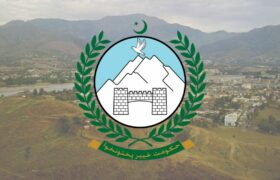Peshawar, the capital of KPK, is among the primogenital cities in Asia, and is center of civilization. In this ancient city, Pashto being spoken by commoners so if you happen to visit you might have quite an edge if you know a little Pashto. For decades, Peshawar has remained the administrative center for the former Federally Administered Tribal Areas (FATA) of Pakistan before these areas were integrated into mainland Pakistan through a constitutional change.
Known history of Peshawar dates back to 2nd century when Kushan King Kanishka changed the capital from Pushkalavati (Presently Charsadda) Purushapura (ancient name of Peshawar). The word Peshawar was adopted later on which is derived from Sanskrit and means “City of Men”. Historically, the area of Peshawar valley basically belonged to the Gandhara and eastern Iranian tribes.
Greek dominance under the Alexander the Great, also left its mark on the city’s history after which the Arab conquest took place and Islam came to the rise. Peshawar, since centuries, has been acting as a trading and economic hub between India, and Afghanistan and beyond to Central Asia. Cultural similarities of the city with Afghan culture makes it favorite hometown destination for most Afghans. It has moderate climate and its production of silks, handicrafts; cotton textile, footwear etc provide a stable economy.
It is deemed as a conservative Islamic city with a great history. It has all kinds of professionals and manufacturers. From goldsmiths to silversmiths, traditional carpets (which is one of the biggest exports of the country currently), pottery, clothing and artwork on the wood, stones or brass. Peshawar was known for its massive 16 gates known as Rampura Gate, Reti, Kachehri, Asamai, Kabuli, Bajouri, Dabgari, Ramdas, Beriskian, Sard Chah, Sirki, Kohati, Yakka Thoot, Ganj, Lahori, Hashtnagri. There are number of tourists’ spots in the city which invites thousands of visitors from across the world. Some of the famous tourist destinations in the city include Mahabat Khan Masjid,Sir Cunningham Clock Tower, Shahi Bagh, Qissa Khwani Bazaar, Bala Hisar Fort, Bab-e-Khyber, and Jamrud Fort. Each one of these has many tales of bygone eras to all of those who are keen to know their past.

“Bara” markets are another attraction in the city for many. These markets are known for the huge variety of goods, and surprising discounted prices. But to exploit this trait of the city, one has to know the art of “hard bargaining”. This phenomenon can be witnessed when the ladies go shopping to Rashakai, a place well known for cloth market.
Another reason for visiting the city is its rich food and cuisine. Lots of visitors satisfy their taste buds with the amazing “chappal kababs, while others prefer to taste “charsi tikka” and the “namkeen gosht”; these dishes make Peshawari food simply unforgettable.
Strategically, Peshawar also served as a military garrison for many armies in the history and it continues to play this role to date. Peshawar is house of one of 9 permanent corps of Pakistan army and a strategic airbase of PAF providing security of Western borders and a backup base for eastern front.
The people of Peshawar are well known for being extremely welcoming. Their hospitality always makes visitors feel at home. Many visitors find the attraction towards this city to visit it again just because of this trait of this city.
Traditionally, people in Peshawar are certainly conservative in terms of clothing or socializing which is why we see a lot of shuttlecock burkas or “chaddars” or “abayas” around the town however this does not necessarily mean the majority is narrow-minded. With more cafes, restaurants, and places where teenagers get to hang out, change in these trends is also visible. Another old custom that has now changed is the “hujra” which people used to have, a separate place where the men would gather, sort of drawing room just for men where the sitting arrangement would be on the floor with lots of cushions. But this was more common earlier when the areas people were living in were a lot more spacious and when the females of the house would not step in front of the male guests. Nowadays, it is pretty much similar to the rest of the cities where every house has a drawing room and not a separate distant huge room for guests. Older traditions are giving way to new customs and social norms. This is a sign of this city’s dynamic nature who has the ability to adapt to changes along with changing times!




